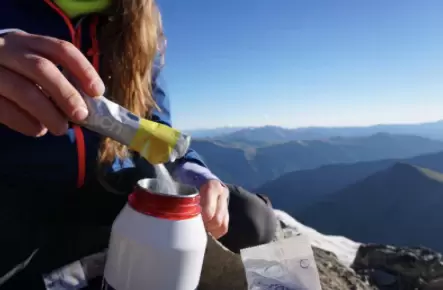Skratch LabsSponsor Post - Article provided by Pikes Peak Marathon partner, Skratch Labs  Have you ever ran a marathon when it was supposed to be 'cool' outside but it ended up being super hot? Ever 'carboloaded' the NIGHT before the race and got stomach cramps? Thought you knew what you needed on the day of but ended up stopping in the porta potty at mile 5? Don't worry, we've also made these mistakes before. But we learned. We learned how to fix our mistakes and prep for a better, stronger marathon. These 4 tips are more like tasks. They'll take time, and they're not so simple. Some of them will take longer than others and some of them will be tougher than others. But they worked for us. Check 'em out and give 'em a try.  Photo: Kristin Teig Photography Photo: Kristin Teig Photography Tip 1: Carboload (the right way) Increase the amount of carbohydrates you consume 5-10 days before the marathon, especially after your workouts. Not only will this help top off the carbohydrate or glycogen stored in muscle (which is the critical fuel for the marathon), glycogen also holds a significant amount of water, which helps to increase your total body water.  Photo: Michael Garrison @runwithgarrison Photo: Michael Garrison @runwithgarrison Tip 2: Adapt to the heat Make sure that you’re adapted to the heat. It may or may not be hot when you run that marathon but if you’re not ready for the heat, then even the best hydration strategy may not help you cope with hot conditions. Being ready for the heat also causes more water to be stored in your body which will help you even if it’s not hot. To heat adapt, plan at least a third of your training in the heat for at least 6 weeks before your event, making sure that your last session in the heat is within 2 days of your event. If you live in a cool environment, you can do training sessions indoors with more clothing, or heat acclimatize in a hot sauna. As always, listen to your body, your coach, and use common sense.  Photo: Brendan Davis Photo: Brendan Davis Tip 3: Dial-up your salt & water intake Pre-hydrate by increasing the amount of salt and water you intake in the days leading up to the marathon. While a high sodium diet isn’t normally recommended for the general public, athletes can lose an appreciable amount of salt through sweat. Moreover, salt is important in driving thirst and in helping us to hold onto water. This is a bad thing if you are hypertensive, but a good thing if you want to be optimally hydrated for a hot marathon. A drink like our Wellness Hydration Mix, formulated to treat severe dehydration, is a great way to pre-hydrate before an event. For extreme heat, many elite athletes use a serving of our Hyper Hydration Drink Mix the night before and the morning of their event.  Photo: Naomi Plasterer @naomiplasterer Photo: Naomi Plasterer @naomiplasterer Tip 4: Plan ahead Make sure you’ve got a plan for the day - that you have what you want to drink on course (ideally, a solution that replaces both the water and sodium you lose in your sweat), that you listen to your thirst, that you listen to your body, and that you have the flexibility and common sense to adapt to changing circumstances. Comments are closed.
|
©
Pikes Peak Marathon

